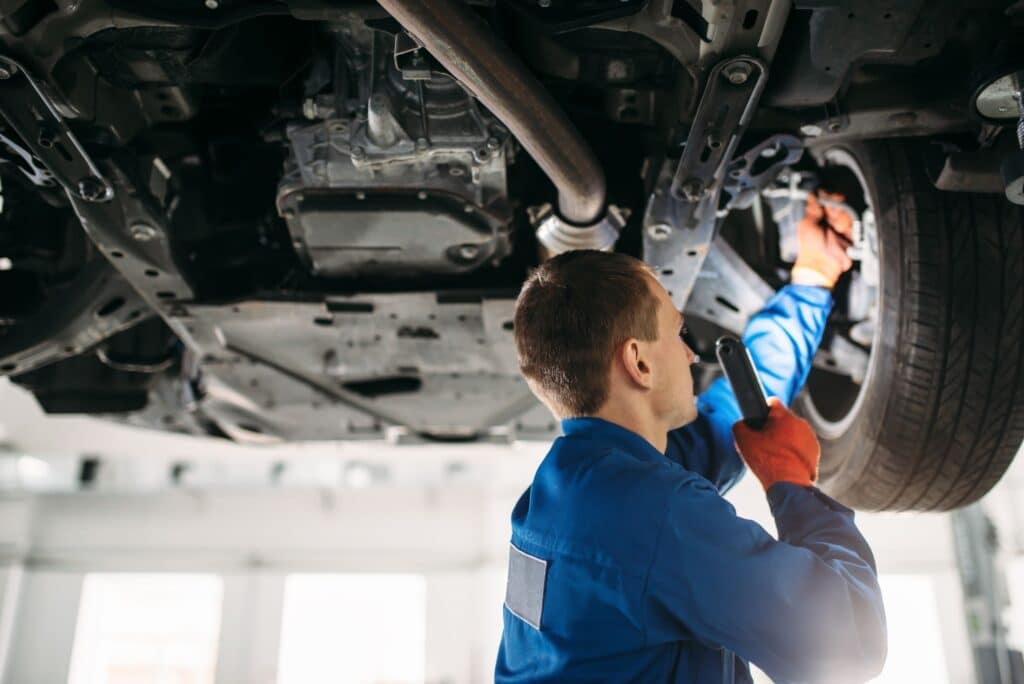Regular safety inspections are essential for maintaining the safety and reliability of your vehicle. These inspections help identify potential issues early on, ensuring that your vehicle remains in optimal condition and minimizing the risk of accidents or breakdowns. But how often should you have this important task done?

Follow Manufacturer Recommendations
The frequency of safety inspections may vary depending on factors such as your vehicle’s make, model, age, and mileage. Manufacturers typically provide recommendations for scheduled maintenance and inspections in the owner’s manual or maintenance schedule. It’s essential to follow these recommendations to ensure that your vehicle receives the necessary attention at the right intervals.
Annual Safety Inspections
In many regions, annual safety inspections are required by law to ensure that vehicles meet minimum safety standards. These inspections typically cover essential safety components such as brakes, tires, lights, steering, suspension, and emissions. Even if not mandated by law, scheduling an annual safety inspection is a good practice to identify any safety issues early on and address them promptly.
Regular Maintenance Intervals
In addition to annual safety inspections, regular maintenance intervals are essential for keeping your vehicle in top condition. This includes tasks such as oil changes, fluid checks, filter replacements, and tire rotations. Many of these maintenance tasks also involve inspecting critical safety components to ensure they are functioning correctly.
Mileage-Based Inspections
Some safety inspections are based on mileage milestones rather than time intervals. For example, certain components may need to be inspected or replaced every 30,000, 60,000, or 100,000 miles. These mileage-based inspections often coincide with major service intervals and involve comprehensive checks of critical systems.
Signs of Wear or Damage
In addition to scheduled safety inspections, it’s essential to be vigilant for signs of wear or damage on your vehicle’s components. If you notice unusual noises, vibrations, warning lights, or changes in vehicle behavior, it’s crucial to have your vehicle inspected by a qualified mechanic as soon as possible. Ignoring these warning signs can lead to more significant safety issues down the road.
Special Circumstances
Certain driving conditions or circumstances may warrant more frequent safety inspections. For example, if you frequently drive in harsh weather conditions, off-road terrain, or stop-and-go traffic, your vehicle may experience accelerated wear and tear on safety-critical components. In such cases, more frequent inspections can help identify and address issues before they escalate.
DIY Inspections
While professional inspections are essential for a thorough assessment of your vehicle’s safety, you can also perform basic safety checks on your own between scheduled inspections. This includes visually inspecting components such as tires, lights, and brakes for signs of wear or damage and ensuring that fluid levels are topped up.
Safety Inspections from Ken’s Automotive & Transmissions
In conclusion, the frequency of safety inspections on your vehicle depends on various factors, including manufacturer recommendations, legal requirements, mileage milestones, and driving conditions. When you think it’s time for a safety inspection, bring your car to Ken’s Automotive & Transmissions. Our dependable auto mechanics will carefully inspect your vehicle and bring to your attention anything that can cause immediate or long-term damage. Contact us now to schedule an appointment.














